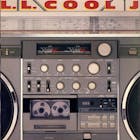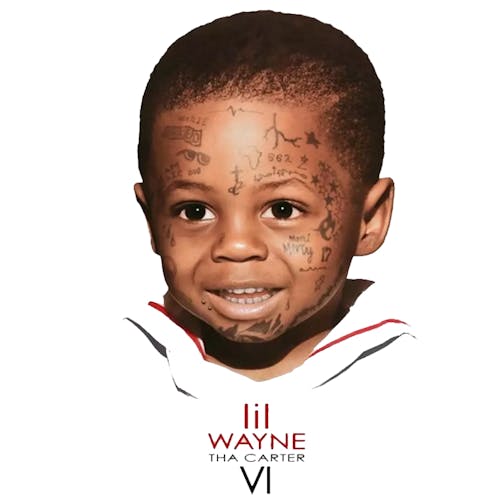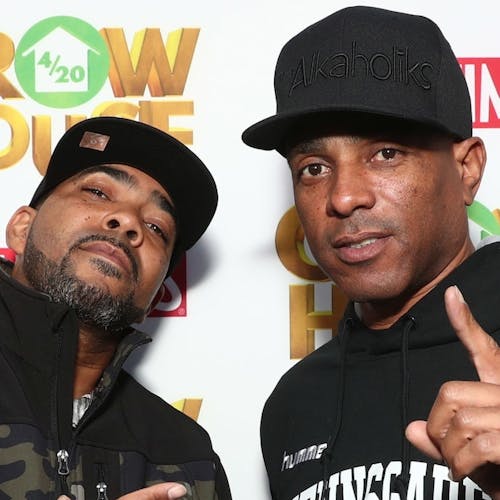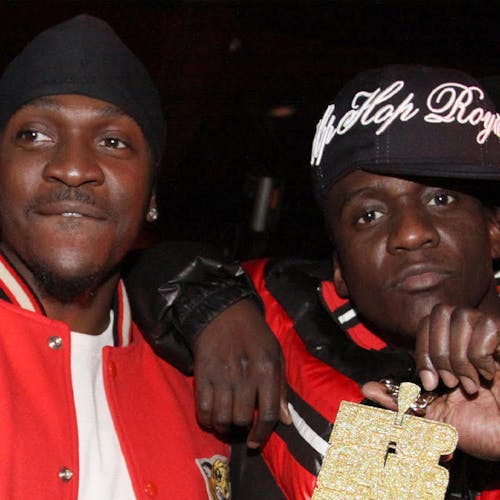
Classic Albums: 'Run-D.M.C.' by Run-D.M.C.
Classic Albums: 'Run-D.M.C.' by Run-D.M.C.
By Jay Quan
Published Fri, May 13, 2022 at 12:00 AM EDT
Run-D.M.C.'s self titled, full length debut album served as a template for the rap album, and caused a paradigm shift in the still new rap record industry.
By 1983, there was a lull in rap music. The glory days of legendary live performances at clubs like Harlem World, T - Connection and The Black Door were suddenly in our rear view. Though "Planet Rock" by The Soul Sonic Force and "The Message" by Grandmaster Flash & The Furious 5; two of rap music's most influential recordings had dropped the year before, the genre was screaming for something new. Rap records were still recorded by bands, and the records contained full orchestration and felt like the disco records that inspired them. "Planet Rock" and "The Message" both deviated from the "disco" sound bed, and that deviation was in large part responsible for the international success and influence of both songs.
Because the aforementioned groups were opening for rock acts like The Clash and Joan Jett & The Blackhearts as well as funk acts like Parliament Funkadelic and Cameo, their onstage style of dress was more like a costume than the gear that B Boys and Girls were sporting on the streets of New York. "We dressed like that because we wanted to create high entertainment value," Grandmaster Melle Mel explained to Hip-Hop Historian JayQuan. "In those days, you couldn't come on stage looking like the crowd."
"We were the opening act for Rick James and Billy Idol. It's bad enough that the musicians back then taunted us for not having a band. We were rock stars opening for rock stars!"
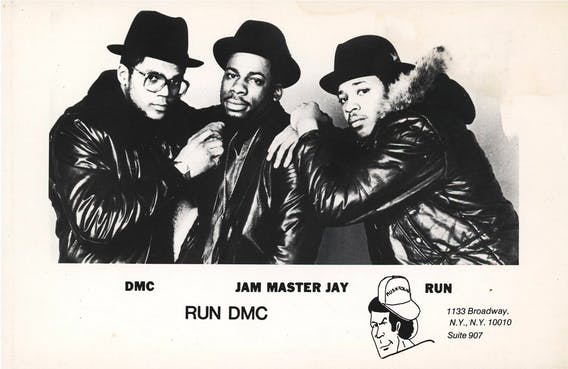

DROP YOUR EMAIL
TO STAY IN THE KNOW
In March of 1983 something new arrived. For that generation, the single "Its Like That"/"Sucker MC's" released on Profile Records was a "where were you when you heard?" moment. Not since Spoonie Gee's 1980 "Love Rap" had a rap record dared to use only drums for the entire record. The drums on "Love Rap" were played by multi instrumentalist and producer Pumpkin, while Larry Smith's Oberhiem DMX drum machine provided the drums for "Sucker MC's" - a testament to technology bringing in a new era of production. "It's Like That"/"Sucker MC's" was a literal line in the sand that separated what was considered the old school from the new. Ironically, rapping over just drums was something that the first generation M.C.'s did in the parks and clubs over break beats since the earliest days of the music, but the first generation independent record label CEO's were not forward thinking enough , and the technology was not yet present to fully support drum only rap records.
Enter Run's older brother; concert promoter and artist manager Russell Simmons. Simmons insisted that it was time for the music to be stripped down, and that the guitars, horns, pianos and flutes needed to be removed from the music. Simmons would regularly instruct producer Larry Smith to strip the music down in an effort to move away from the Sugar Hill and Enjoy Records disco sound that dominated rap records from 1979 until 1982.
The cadence of Run and D.M.C was another factor that contributed to their music sounding futuristic when compared to those that predate them. While their predecessors rapped in the cadence of the "Jive Talking" radio personalities like Hank Span and Gary Byrd; Run and D exhibited an almost conversational tone that when combined with the minimalist backing tracks immediately let the listener know that things would never be the same again. Doug E Fresh described it to JayQuan: "You could literally feel the baton passing. You knew that we would never go back."
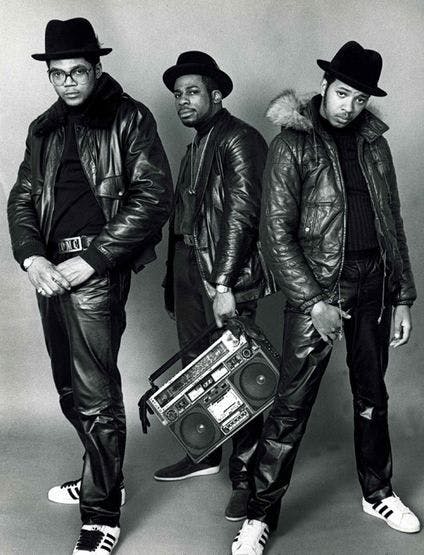

Continuing in their tradition of two songs on one single, Run - D.M.C. released "Hard Times"/"Jam Master Jay" in December of 1983 and once again accomplished a few firsts. "Hard Times" was rap's first cover of another rap song, originally recorded by Kurtis Blow for his self titled debut album from 1980. "Jam Master Jay" was an ode to Run D.M.C.'s D.J. of the same name, who wasn't mention on their first release. The Scratching on "Jam Master Jay" was incredible, and the beat was odd at the time, as it didn't contain a snare drum. Sal Abatiello, owner of the legendary Disco Fever Hip-Hop club said in an interview with THE FOUNDATION: "The first time that was played that in The Fever everyone just stood there. Nobody danced, not because it wasn't good, it was just so different."
Before 1984, rap music was a singles-driven market. The only full length rap albums at the time were released by Sugar Hill Records with the exception of Kurtis Blow's Mercury/ Polygram released albums. The Sugar Hill Records full length albums by The Sugar Hill Gang, The Crash Crew, The Treacherous 3, Sequence and Grandmaster Flash & The Furious 5 were more like compilations of previously released singles than actual albums. There were no themes, liner notes or consideration taken to the sequencing of songs. Kurtis Blow's albums, like many on the Sugar Hill label contained just as many R&B songs with the M.C.'s and/or band members singing as there were with only rapping. The handful of independent rap label CEOs also acted as A&R agents, who did not believe that a rap-only album could sell.
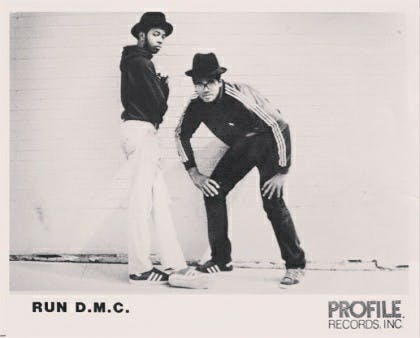

The success of Run-D.M.C's four songs demanded a full album, but not everyone wanted one. Profile Records co-founder Cory Robbins told JayQuan on THE FOUNDATION podcast: "It was time to do an album, and they didn't want to. I called Russell (Simmons) their manager, and told him that we had all these songs on the radio, and we needed to put on an album." Robbins added: "Russell said that rap albums don't sell, and there's never been one that sold anything and how they all suck. I told him that we had four songs, and that if we did five more we would have enough for an album. If we sold 30,000 or 40,000 we would be good. I had to remind him that contractually we had the option for an album. He agreed to do the album and we ended up with the first Gold rap album."
In March of 1984 Run-D.M.C. was released. Run-D.M.C.'s most successful mainstream recording is their duet with Aerosmith, the genre bending "Walk This Way" from 1986's Raising Hell; but their first time combining rock and rap occurred on "Rock Box" from Run-D.M.C. "Rock Box" received heavy MTV airplay, the first rap video to do so. Robbins explained of the video: "We intentionally casted a little White boy on the video in a White Rock club with a predominantly White crowd, so that MTV would play it, and it worked."
"30 Days", "Jay's Game", "Hollis Crew" and "Wake Up" comprised the album that set the template for the modern day rap album.
"Jays Game" served as another ode to Jam Master Jay, but this time it was an instrumental featuring the cutting and scratching of the late D.J. "Wake Up" and "30 Days" covered social commentary, just as the previously released "It's Like That" and "Hard Times" did and "Hollis Crew" was the hardcore/street song that was christened "Krush Groove 2" ("Sucker MC's" was "Krush Groove 1"). This format of social commentary, street jam and DJ cut song would set the standard for the subject matter contained in rap albums for the next several years. For the first time the pure rap album had arrived. There were no R&B ballads, or bands; only drum machines and scratching. The only thing missing from the album was a rap ballad which LL COOL J would soon make standard.


Run D.M.C. and its album cover was the first time that many outside of the tri state area of New York, New Jersey and Connecticut actually saw what Run D.M.C. looked like. The B-Boy streetwear that Run and D.M.C. wore on the back of the record cover was a first glimpse into what New York Hip-Hop fashion looked liked for many. Run-D.M.C. established a standard that forever changed the game and further established rap as a formidable music genre.
